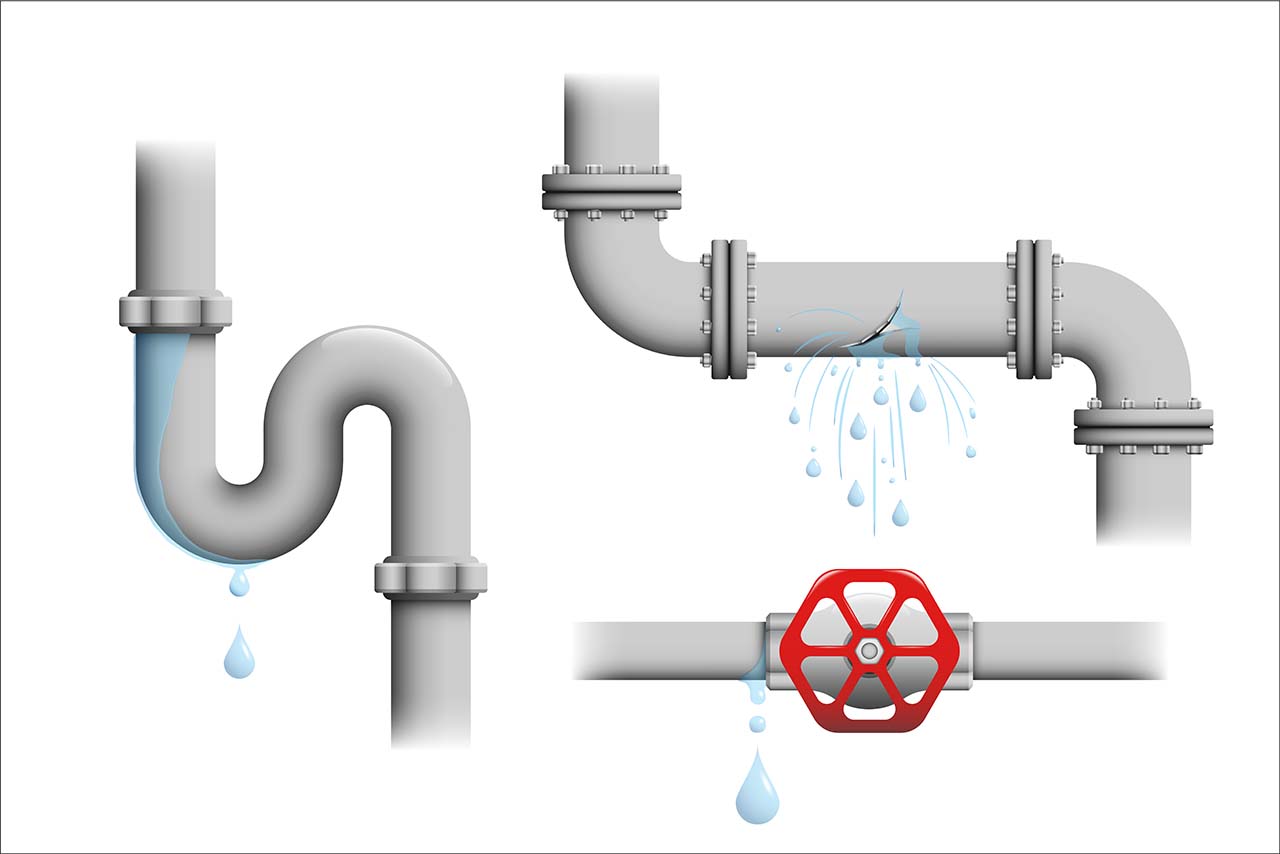
.png)
In some cases, water may enter the ventilation ducts from a leaky pipe. Moisture may collect in the ventilation system due to poor condensate pan drainage, poor roof drainage, or high humidity in the ventilation ducts. The building's air-handling system should be inspected to determine whether it is moldy.

Complaints of past water problems or water leaks should be investigated to determine how much water was involved and how quickly it was removed. Moldy or musty odors should alert an investigator to the possible presence of mold. (A white, soluble fibrous material on the soil of the crawl space may be alkaline salts, not mold, indicating moisture has been a problem and suggesting that the area should be more extensively inspected.) If possible, crawl spaces should be included when examining the building. Either way, touring the building with maintenance or other personnel involved with the water problem may be helpful. In some cases, management or health and safety personnel will have been notified. Maintenance personnel are frequently among the first to know when moisture problems have occurred. Commercial Buildings, Large Buildings and SchoolsĪ key step when looking for mold in a building is to determine whether there has been a water leak.
#Find the hidden water professional#
Check references and look for membership in professional organizations. If you hire a home inspector, building inspector, or other professional to locate a water or mold problem, make sure the professional has experience identifying and locating mold and water problems. Regularly check areas that have been or are likely to get wet. Homesīasement apartment (3-4 feet below ground) with mold on painted gypsum board, baseboard, and carpet.Īreas that are always or often damp, such as bathrooms, laundry/utility rooms and basements, are common locations for mold growth in homes. If mold might be released into the air, investigators should use PPE to reduce exposure. Personal protective equipment, or PPE is not always needed when looking for mold, but it should always be available. Opening and closing air handlers, for example, can send high levels of dust and mold into the air. Investigating hidden mold requires caution since disturbing moldy areas may spread mold throughout the building. Specialized equipment such as borescopes and moisture meters, and in some cases special sampling techniques, may be helpful in locating and identifying hidden mold areas. Investigating hidden mold can be difficult and may require a professional with experience investigating water- and mold-damaged buildings. On acoustic liners in ventilation ducts.Inside pipe chases and utility tunnels (areas in walls where water and other pipes are run).Damp areas behind walls and in crawlspaces.Possible locations of hidden mold also include: Mold does not need light to grow, it can grow in dark areas and on hidden surfaces such as: In some cases, indoor mold growth may not be obvious. CarpetĬarpet backing or padding must be dried in addition to the carpet or mold will likely result. It is important to dry items quickly to prevent mold growth in most cases, items dried within 24-48 hours will not become moldy. If there has been a leaking pipe in the basement, for example, items such as carpets, paneling and drywall there should be checked for water damage or mold growth. Reports of any of these problems should be investigated. Chapter 2 lists a number of factors that may contribute to indoor humidity and moisture problems. Therefore, it is important to look for indoor areas where moisture is a concern. Commercial Buildings, Large Buildings and SchoolsĪs discussed in Chapter 2, mold can grow in wet or damp spots in a building, or where humidity is high.Lesson 1 - Where to look for mold contamination - building investigation Where to look for mold contamination - building investigation.Chapter 8: Communicating with the Building Occupants.Chapter 6: Containment and Personal Protective Equipment (PPE).Chapter 5: Large Areas and Other Special Concerns.


 0 kommentar(er)
0 kommentar(er)
